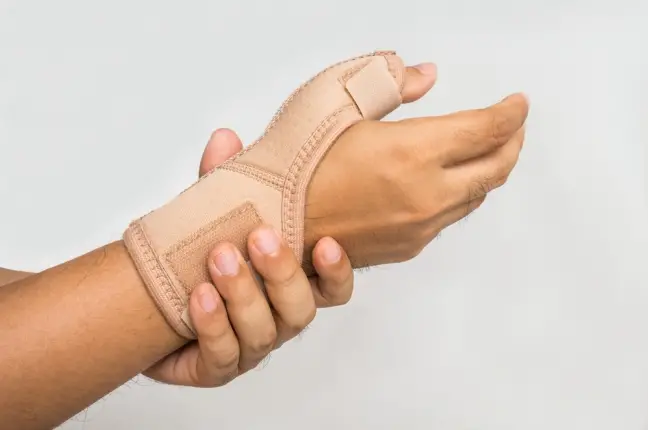How is Carpal Tunnel Treated ?
If carpal tunnel syndrome is suspected based on the symptoms reported by the patient the doctor will begin his/her diagnosis, by ascertaining the degree and distribution of numbness in the affected hand.
Further examination will follow of other upper body joints to make sure that the carpal tunnel syndrome (CTS) is not any other type of repetitive strain injury. The wrist will then be examined closely and diagnostic procedures carried out –
Diagnosis of Carpal Tunnel Syndrome
- Swelling, soreness of the wrist along with signs of abnormal heat in the joint can be indicative of the tunnel syndrome.
- The doctor will note any sign of discoloration or deformity of the joint.
- If the front of the wrist is tapped a few times, and a tingling sensation is induced, this is referred to as Tinel’s sign of the presence of CTS.
- If other symptoms of carpal tunnel syndrome can be reproduced by bending the wrist forward (Phalen’s test), then this equation is indicative of CTS.
The results from a Nerve Conduction Velocity Test will also assist greatly in confirming that the patient is suffering from carpal tunnel syndrome. The test will measure the speed of travel of the median nerve as it travels through the carpal tunnel. A slower than standard speed will strongly suggest that CTS is affecting the joint.
The doctor may carry out a test known as electromyogram (EMG) on the wrist muscle to be absolutely certain that it is CTS causing the problem, and not some other kind of skeletal disease.
Additional diagnostic routines will be carried out including blood analyses. Sometimes carpal tunnel syndrome can be associated with other medical conditions. The blood will be examined for –
– Abnormal levels of thyroid hormones.
– The presence of any irregular proteins.
– That the blood cell count and blood glucose are within normal limits.
If a necessary further diagnosis can be made by taking x-rays of the wrist and hand to reveal any abnormalities in the bones and joints. This can equally be carried out by using ultrasound techniques when the condition and movement of the joint can be observed in real time.
Treatment of Carpal Tunnel Syndrome
There are a variety of treatments available for carpal tunnel syndrome all of which depend on the intensity of the condition, and if there are any other diseases causing the symptoms.
As for all repetitive strain type of injury, rest is commonly recommended along with therapeutic exercising of the joint. People who are involved in occupations which make them vulnerable to CTS such as computer operators are advised to take short breaks and rest every few hours from their repetitive task.
Medications are sometimes used to treat CTS. Pyridoxine (Vitamin B6) has been effective in treating the condition, and nonsteroid anti-inflammatory drugs have often been used to relieve pain and inflammation.
Speedy relief from the persistent symptoms of carpal tunnel syndrome can be obtained by the use of corticosteroid type drugs which can be administered either orally or injected directly into the wrist joint. If used for only short periods any side effects from these medicines are minimal.
Usually, in most patients, the CTS will improve following these conservative treatments. However, if there is chronic pressure on the median nerve causing constant, extreme numbness of the hand and fingers, then surgery may be required to relieve the syndrome.


